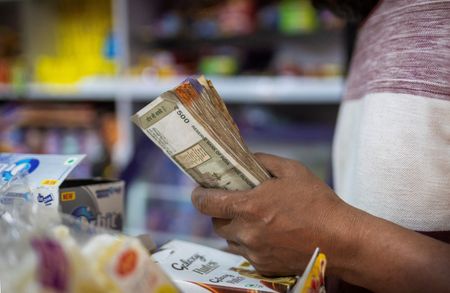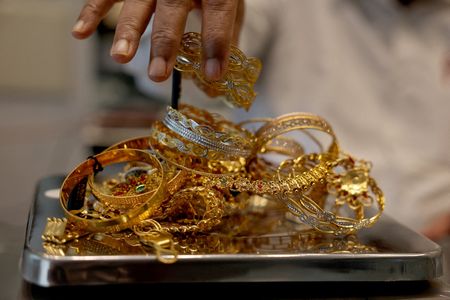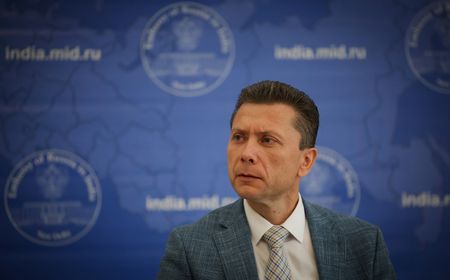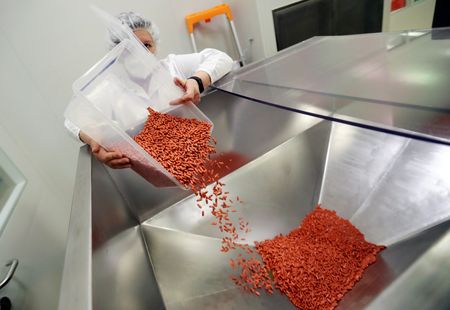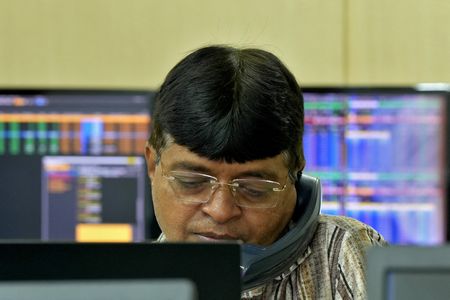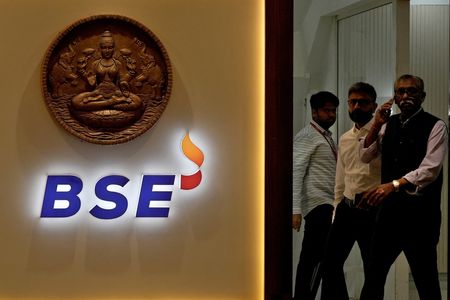By Ashwin Manikandan
MUMBAI (Reuters) – The Indian rupee slipped on Wednesday, as corporate hedging and short-term speculators bolstered demand for the greenback, most of which was met by dollar sales by foreign banks.
The rupee settled at 87.0650 to the U.S. dollar against its close of 86.9500 on Tuesday when it climbed the most in over a month, boosted by speculation over Russia-Ukraine peace talks.
Traders said foreign banks were active sellers of dollars on Wednesday, limiting rupee depreciation despite significant hedging by importers.
A rally in local equities and position squaring also helped the Indian currency recover after recent pressure, traders said.
Recent weeks have seen the rupee’s direction influenced by news around U.S. tariffs on India, S&P’s upgrade of the nation’s sovereign credit rating and Prime Minister Narendra Modi’s planned tax cuts on goods and services.
Foreign portfolio investors turned buyers of Indian assets in the past three sessions after net selling Indian markets in the last few weeks over tariff uncertainties.
“FPIs have turned steady buyers in Indian markets, encouraged by hopes that the U.S. may reconsider its plan to impose an additional 25% tariff on Indian exports,” said Amit Pabari, managing director at CR Forex.
The return of foreign inflows comes even as U.S. Treasury Secretary Scott Bessent on Tuesday accused India of profiteering from its purchases of Russian oil during the war in Ukraine.
Other Asian currencies traded mixed on the day, while the dollar index was slightly higher at 98.21 as on 1549 IST.
Rupee traders will also tune in to Federal Reserve Chair Jerome Powell’s speech at Jackson Hole, Wyoming, on Friday, which may provide clues on the U.S.’s interest rate trajectory.
“A signal that cuts may be delayed could strengthen the dollar, while any indication of looser policy may weigh on it and encourage risk-on sentiment,” Pabari added.
(Reporting by Ashwin Manikandan; Editing by Ronojoy Mazumdar)

